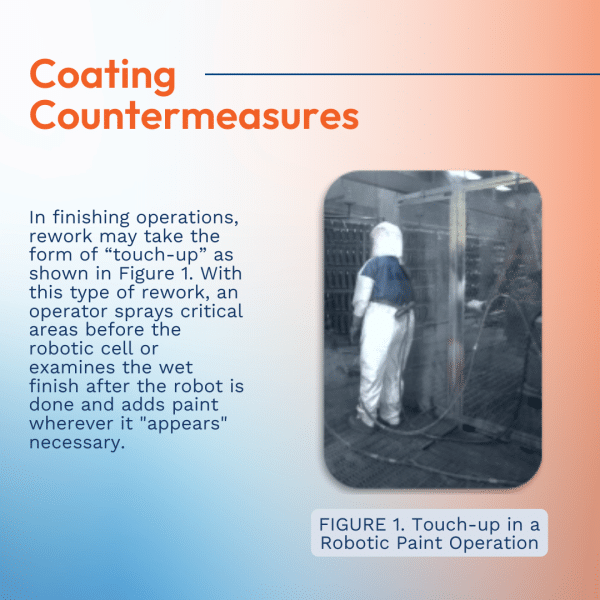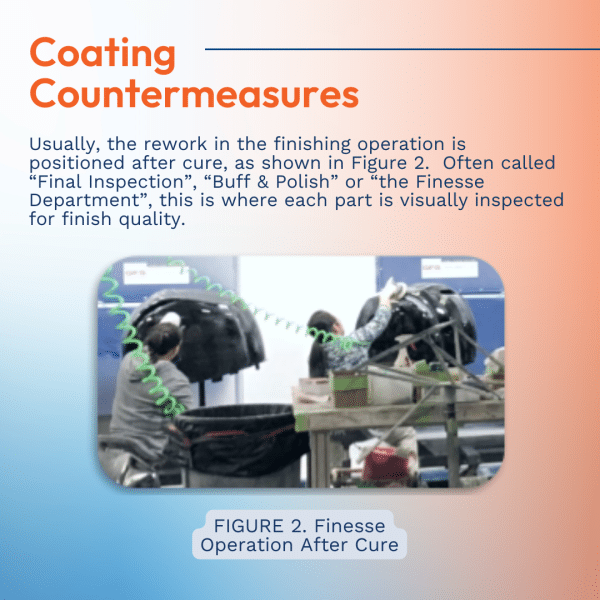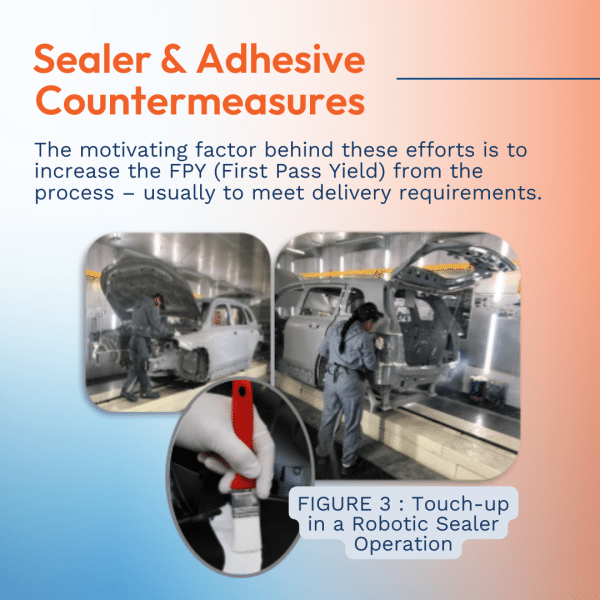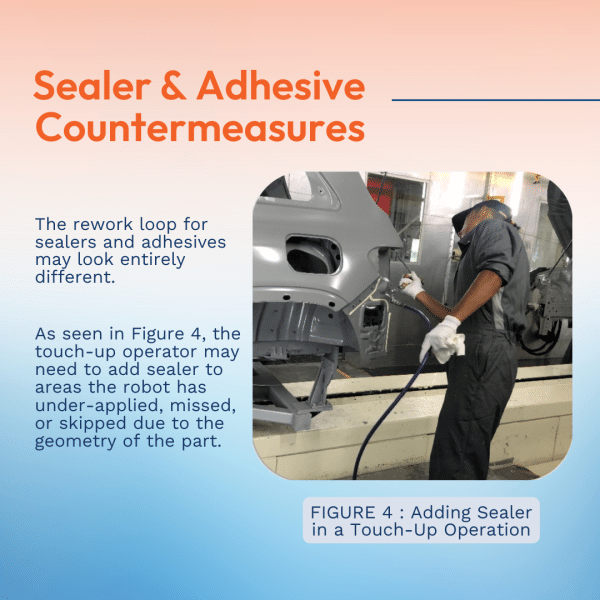When Did Rework Become Part of Your Process? – Part II
In Part I of this series, we looked at some situations that create the need for rework in our automated fluid dispensing processes. We drew the conclusion that, despite the robot’s ability to reliably repeat motion, we still often end up having to “clean up” after our application process. Examples include brushing out sealer beads, cleaning off excess adhesive, buffing out paint, or even sanding and repainting certain areas.
In this Part II, we’ll talk about how these interventions show up in our process and what they look like in our factories. So, let’s pick up where we left off: the reasons we need to intervene in the first place.

Mission-Critical Processes
Fluid dispensing applications have become essential to modern manufacturing - they determine the functionality and the fit-and-finish of the final product. As a result, applications must be repeated flawlessly time-after-time – often over millions of cycles.
In sealer and adhesive operations, issues like poor bonding or waterproofing, or “goop” in unacceptable locations are common.
For coating operations, we may also have sealing/waterproofing and durability issues. But more often, the issues are aesthetic; terms like “orange peel”, “off-color”, “blister”, and “pop” are often used.
In each instance, the result is a product we cannot ship to our customer.
Countermeasures are clearly in order. These can take many forms.
Coating Countermeasures
In finishing operations, rework may take the form of “touch-up” as shown in Figure 1. With this type of rework, an operator sprays critical areas before the robotic cell or examines the wet finish after the robot is done and adds paint wherever it appears necessary.
The problem with this situation is that the operator’s discretion is subjective and actually negates the precision and economy that the robot was installed for.
Usually, the rework in the finishing operation is positioned after cure, as shown in Figure 2. Often called “Final Inspection”, “Buff & Polish”, or the “Finesse Department”, this is where each part is visually inspected for finish quality.
Here, the operator must either accept or reject the part. Often, there is also an option to “fix” the flaws by buffing and polishing areas to remove “dirt” or improve the gloss of the part.
Operators might even sand out defects and send the part back through for repainting (a very costly rework option).
But the worst situation of all is when the part is beyond rework and must be scrapped.
Regardless of the outcome, finesse means that each part must be handled and dispositioned separately. And sometimes, both “touch-up” and “finesse” become part of the process.
Though the curing oven is often cited as the part of the paint shop that sets the maximum throughput, for many plants - if not most - the Finesse Department is the bottleneck operation, limiting throughput and limiting revenue potential.


Sealer & Adhesive Countermeasures
Or, as shown in Figure 4, the touch-up operator may need to add sealer to areas the robot has under-applied, missed, or skipped due to the geometry of the part.
When the part is too warm, the sealer or adhesive can “thin out” at the surface of the part causing it to shear against itself and slide off the surface completely. At that point,the touch-up operator must replace it.
No matter what you call them, these are examples of rework.
Or, as shown in Figure 4, the touch-up operator may need to add sealer to areas the robot has under-applied, missed, or skipped due to the geometry of the part.
When the part is too warm, the sealer or adhesive can “thin out” at the surface of the part causing it to shear against itself and slide off the surface completely. At that point,the touch-up operator must replace it.
No matter what you call them, these are examples of rework.


How Did We Get Here?
The motivating factor behind these efforts is to increase the FPY (First Pass Yield) from the process – usually to meet delivery requirements.
This affects operating costs for things like supplies, floor space, and, of course, personnel (and all of the associated overhead). This directly impacts profitability.
Often-overlooked is the impact on the competitive position in the marketplace – the ability to maintain current business and to add new business – which ultimately affects the potential for growth – and even survival.
Acceptance is the First Step
As with any intervention, the first step is to recognize and accept these things for what they are: rework.
So, now we’ve identified some of the points of rework in our process. In Part III of this series we’ll discuss the real root causes of these problems – and how to solve them.

